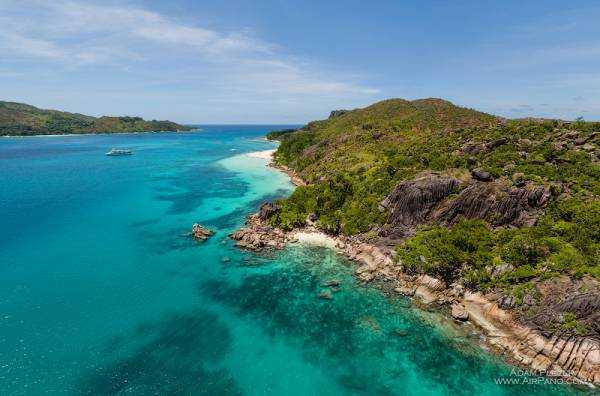The Seychelles archipelago is considered a paradise: summer reigns here year-round. During the "hot" season, from December to May, temperatures hover around 29°C, dropping only 5°C with the onset of "cold" weather.

The comfortable climate, pristine beaches, and picturesque landscapes have long attracted tourists. With the opening of the international airport in 1971, their numbers began to grow rapidly: while at the end of the 20th century, approximately 116,000 people flew to the islands annually, by 2015, that number had increased to 230,000. At the same time, the Seychelles government takes a proactive environmental stance: any initiative, regardless of its commercial component, is assessed from an environmental perspective. After experts estimated the islands' maximum capacity at 150,000 guests per year, resorts began limiting the number of available beds. Prices were also raised, and the Seychelles is now an elite vacation destination where travelers can enjoy harmony with nature.

The archipelago comprises 115 islands, 33 of which are inhabited. Some are granite, but most are coral. Ádám Plézer I photographed several beaches of this paradise.
The fourth-largest granite island in the archipelago, La Digue (French for "La Digue"), is only about 10 square kilometers in area, but even this small area contains hotels and the Veuve Nature Reserve. Its beaches are remarkable for the bizarrely shaped granite formations that jut out of the water, giving the coastline an unusual and mysterious appearance. Among them is the tiny (10 x 3 m), deserted, and "secret" Anse Marron: finding it without a guide can be difficult. Grand Anse Beach is slightly larger: 450 x 20 m, but it is still relatively "wild" and not very popular with tourists. A real hit is Anse Source d'Argent Beach—a giant compared to its neighbors, 1100 x 20 m. Another distinctive feature is the presence of a coral reef, making swimming even more interesting.

But Anse Cocos Beach, located near Grand Anse, offers a view quite unexpected for the Seychelles: a complex of abandoned buildings. They remain from the days when the archipelago knew no tourists and lived off the copra industry. The bright turquoise water and lush vegetation create a striking backdrop to the abandoned village.

The second largest island in the archipelago is Praslin (French: Praslin), covering 38.5 square kilometers. Its beaches compete with each other for the title of most beautiful. Among them are the popular Anse Georgette and St. Pierre, a small island off Praslin's coastline: its views are most often used in Seychelles vacation advertisements.

Cote d'Or Beach is also considered one of the most popular (and certainly the most beautiful!) beaches. Nearby is the Mango Lodge hotel. It takes its name from its location: built amid a mango grove, the hotel offers both picturesque ocean views and the beauty of tropical trees.

Just north of Praslin lies the small (2.86 sq. km) granite island of Curieuse. Here you can relax on the beach or go diving, but the island is primarily famous for its natural beauty. Around 500 giant tortoises live on Curieuse, and the hawksbill sea turtle comes ashore. She lays her eggs, buries them in the sand, and swims out to sea. Two months later, the babies hatch; barely out of their shells, they immediately rush to the water. One of the places where you can see this incredible miracle of life is Anse Papaie beach.

Moreover, both on land and in the waters of Curieuse Island, numerous rare species of fauna inhabit it, making the entire island a protected area. You can visit these and other beautiful Seychelles sites without harming wildlife using AirPano panoramas!
Virtual tour
Spherical 360 video
Ádám Plézer, official website
Source: travel.ru













